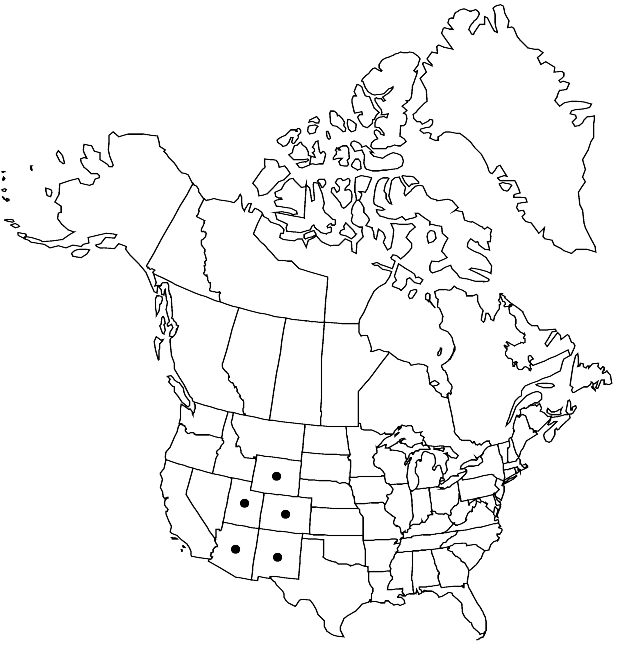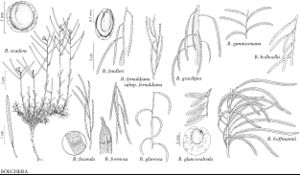Difference between revisions of "Boechera formosa"
Harvard Pap. Bot. 11: 68. 2006.
FNA>Volume Importer |
imported>Volume Importer |
||
| (One intermediate revision by the same user not shown) | |||
| Line 64: | Line 64: | ||
|publication year=2006 | |publication year=2006 | ||
|special status= | |special status= | ||
| − | |source xml=https:// | + | |source xml=https://bitbucket.org/aafc-mbb/fna-data-curation/src/2e0870ddd59836b60bcf96646a41e87ea5a5943a/coarse_grained_fna_xml/V7/V7_527.xml |
|tribe=Brassicaceae tribe Boechereae | |tribe=Brassicaceae tribe Boechereae | ||
|genus=Boechera | |genus=Boechera | ||
Latest revision as of 22:34, 5 November 2020
Perennials; long-lived; sexual; caudex woody. Stems usually 1 per caudex branch, arising from center of leaf tuft, above ground surface on woody base, 2–5.5 dm, densely pubescent proximally, trichomes short-stalked, 4–7-rayed, 0.1–0.4 mm, similarly pubescent distally. Basal leaves: blade linear to linear-oblanceolate, 2–3(–4) mm wide, margins entire, sometimes ciliate near petiole base, trichomes (simple or 2-rayed), to 0.8 mm, surfaces densely pubescent, trichomes short-stalked, 4–8-rayed, 0.1–0.3 mm. Cauline leaves: 7–18, concealing stem proximally; blade auricles absent, surfaces of distalmost leaves densely pubescent. Racemes 6–26-flowered, usually unbranched. Fruiting pedicels horizontal to descending, usually recurved, 5–10(–20) mm, pubescent, trichomes appressed, branched. Flowers divaricate at anthesis; sepals pubescent; petals white to pale lavender, 8–18 × 2.5–4.4(–5.5) mm, glabrous; pollen ellipsoid. Fruits divaricate-descending to reflexed, usually not appressed to rachis, rarely somewhat secund, straight, edges parallel, 4.3–7 cm × 1.6–3 mm; valves pubescent throughout; ovules 72–98 per ovary; style ca. 0.1 mm. Seeds biseriate, 1.2–1.6 × 1–1.2 mm; wing continuous, 0.1–0.2 mm wide. 2n = 14.
Phenology: Flowering Apr–Jun.
Habitat: Rocky slopes and sandy soil in blackbrush, sagebrush, and pinyon-juniper communities
Elevation: 1300-1900 m
Distribution

Ariz., Colo., N.Mex., Utah, Wyo.
Discussion
Although Boechera formosa is usually subsumed within Arabis (Boechera) pulchra, the two species are easily separated. Boechera formosa has white to lavender (versus mostly purple) petals, fruiting pedicels that are not abruptly recurved at the base, narrower (1.6–3 versus 2.5–4 mm wide), mostly non-appressed fruits, and narrower (1–1.2 versus 1.5–2.2 mm wide) seeds. The two taxa are separated by more than 500 km, with B. formosa found only on the Colorado Plateau and B. pulchra, in the strict sense, restricted to southern California, western Nevada, and northwestern Mexico.
Selected References
None.
